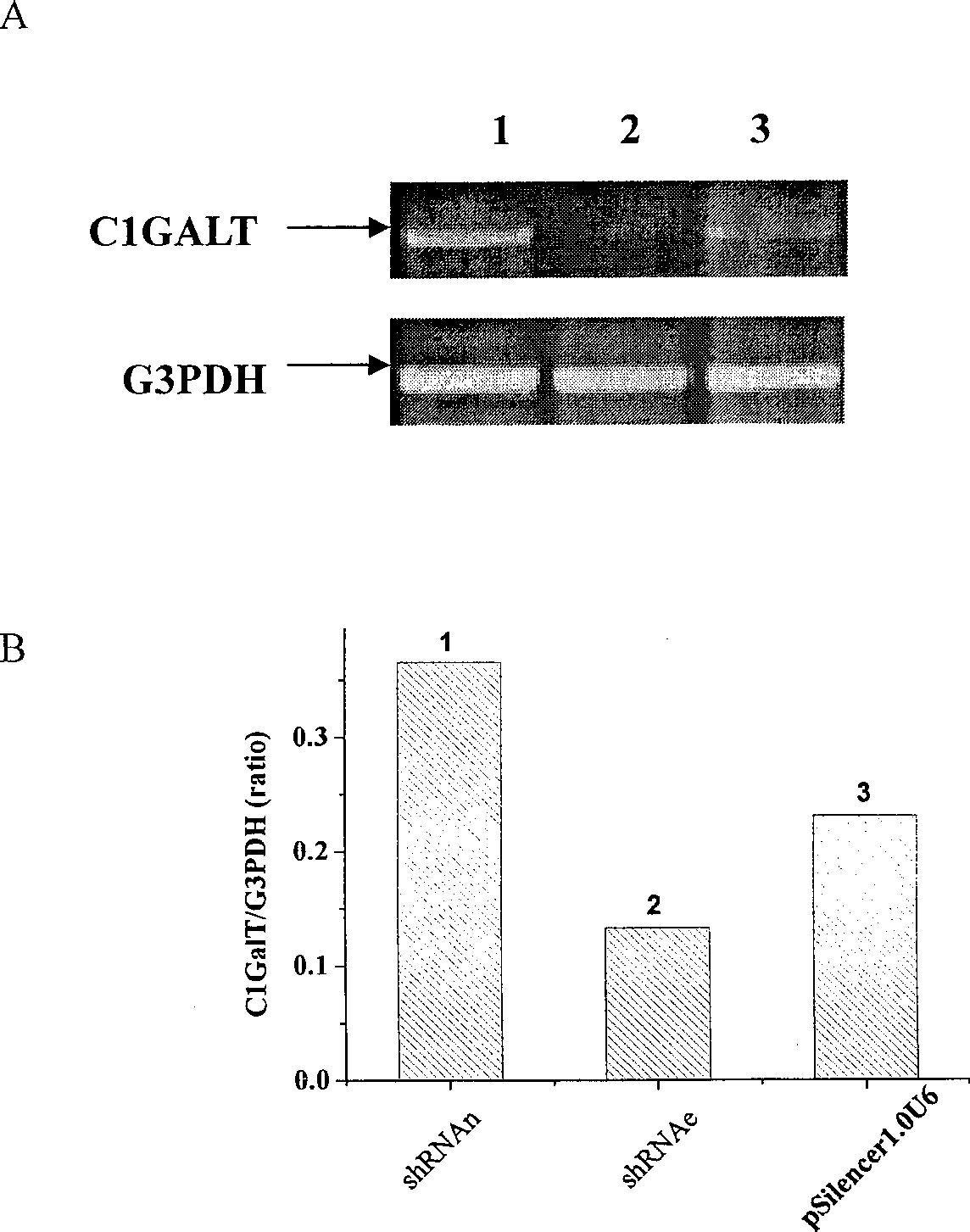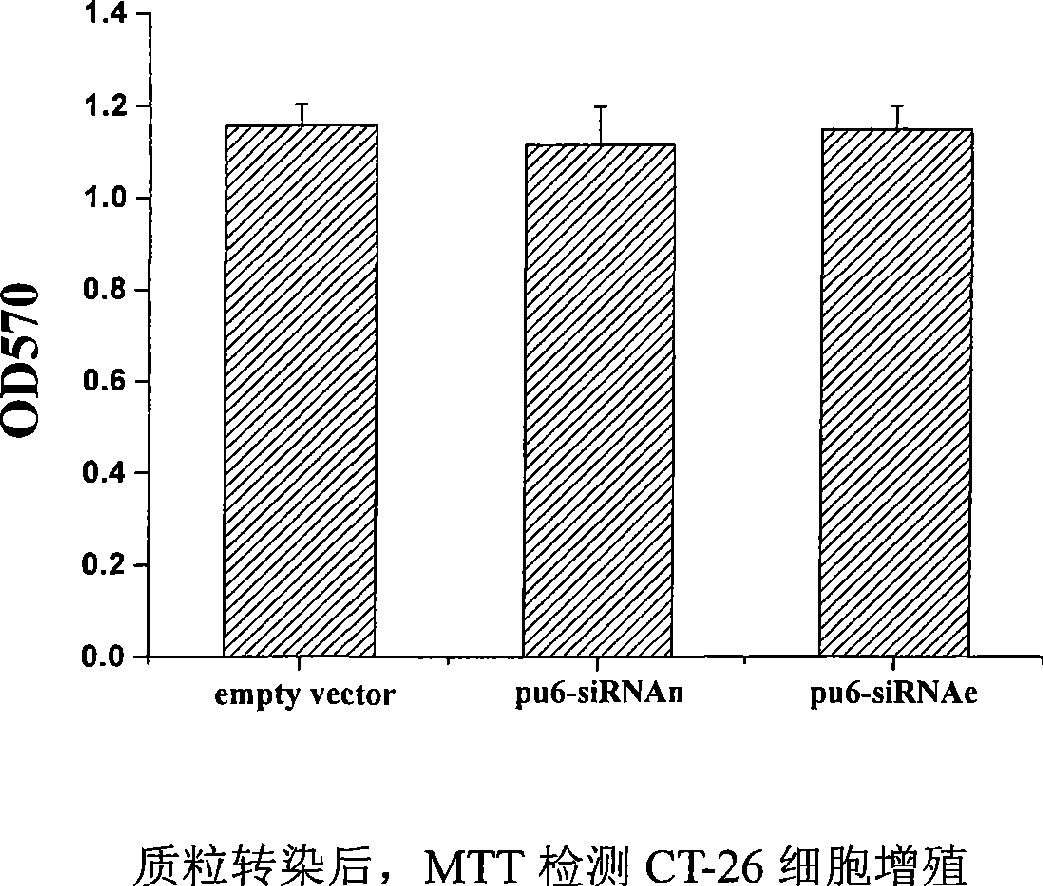Use of ShRNA in preparing medicament for improving survival ratio of xenogenic organ transplantation
A technology of allogeneic transplantation and survival rate, applied in the field of molecular immunity, can solve problems such as nephrotoxicity, and achieve the effects of strong renal side toxicity, prolonging survival time, and small toxic side effects
- Summary
- Abstract
- Description
- Claims
- Application Information
AI Technical Summary
Problems solved by technology
Method used
Image
Examples
Embodiment Construction
[0032] The application of small molecular interfering RNA in the preparation of medicines for prolonging the survival rate of allogeneic organ transplantation, the steps are:
[0033] 1. Selection of target sequence: According to the gene sequence of Core1 beta 1,3-galactosyltransferase (AF157962) provided by GeneBank, the homology and RNA secondary structure were analyzed by BLAST and RNA structure 3.5 respectively, and a 21nt nucleoside was selected The acid sequence 5'-GCGAAGATTTAAGCCCTATGT-3' is used as the target sequence (a construction method and application of an shRNA expression vector that inhibits core1 β1-3 galactosyltransferase. In 2006, Wuhan University applied for a Chinese invention patent, and the application patent number was 200610019901.0, Inventors are Zhang Xiaolian, Zhou Xia).
[0034] 2. Design and synthesize primers. The primer sequences are: Oligo1.5'GCGAAGATTTAAGCCCTATGTTTCA 3'; Oligo2.5'AGCTTGAAACATAGGGCTTAAATCTTCGCGGCC 3'; Oligo3.5'AGCTTACATAGGGCT...
PUM
 Login to View More
Login to View More Abstract
Description
Claims
Application Information
 Login to View More
Login to View More - R&D
- Intellectual Property
- Life Sciences
- Materials
- Tech Scout
- Unparalleled Data Quality
- Higher Quality Content
- 60% Fewer Hallucinations
Browse by: Latest US Patents, China's latest patents, Technical Efficacy Thesaurus, Application Domain, Technology Topic, Popular Technical Reports.
© 2025 PatSnap. All rights reserved.Legal|Privacy policy|Modern Slavery Act Transparency Statement|Sitemap|About US| Contact US: help@patsnap.com



